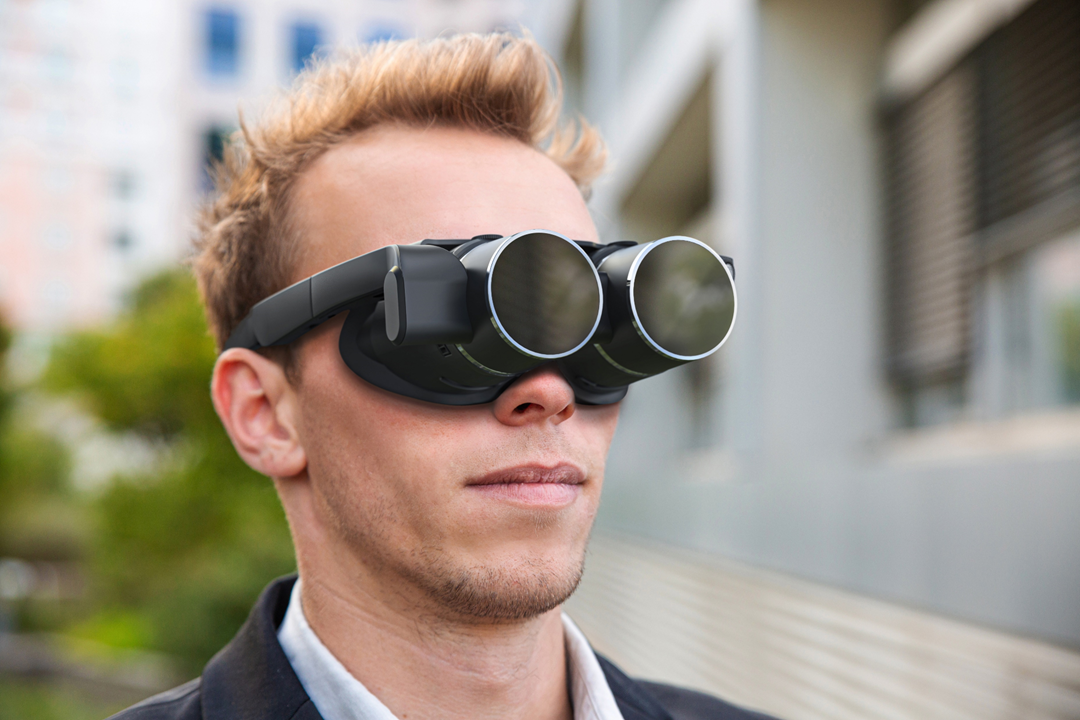Maximizing Efficiency with Screen Readers for the Blind: A Comprehensive Guide
Maximizing Efficiency with Screen Readers for the Blind: A Comprehensive Guide
Blog Article
Enhancing Ease Of Access Through Assistive Modern Technology for the Blind
The assimilation of assistive technology for the blind stands for a pivotal innovation in accessibility, fundamentally altering how individuals browse their settings and involve with culture. As we discover the varied types of assistive devices and their tangible effects on day-to-day living, it comes to be important to take a look at just how ongoing technical advancements are reshaping the landscape of support for the blind community.
Overview of Assistive Modern Technology
Assistive technology describes a variety of devices and software developed to boost the abilities of individuals with specials needs, including those that are visually damaged or blind. This innovation plays a crucial role in advertising independence and boosting the lifestyle for users. By supplying alternative approaches for accessing details and performing daily jobs, assistive modern technology empowers individuals to browse their settings better.
The growth and execution of assistive modern technology accept a variety of concepts targeted at fostering accessibility. These principles consist of user-centered layout, which focuses on the requirements and preferences of the person, and the assimilation of technology right into daily tasks. Such improvements ensure that assistive devices are not only functional but also intuitive and simple to make use of.
In addition, assistive innovation incorporates a varied spectrum of solutions, from low-tech choices like magnifiers to state-of-the-art developments such as display viewers and Braille screens. The recurring advancement of this area is driven by the demand to attend to the one-of-a-kind obstacles faced by people with aesthetic impairments (Wearable technology for low vision). As technology proceeds to advance, the possibility for enhancing access and advertising inclusivity stays encouraging, ultimately adding to an extra equitable culture

Types of Assistive Instruments
Various kinds of assistive tools are available to sustain people who are blind or visually damaged, each designed to resolve details requirements and obstacles. These gadgets can be extensively classified into 3 primary types: low-tech, mid-tech, and high-tech remedies.
Low-tech gadgets include products such as magnifiers, Braille labels, and responsive maps. These are relatively straightforward tools that improve the user's ability to engage with their environment without requiring complicated innovation.
Mid-tech devices often involve much more advanced attributes, such as digital magnifiers and mobile Braille note-takers. These tools can provide capabilities like speech outcome, enabling individuals to gain access to info more effectively.

Influence On Daily Living
The availability of different assistive gadgets considerably boosts the high quality of life for people that are blind or visually damaged, impacting their everyday living in profound methods. By integrating innovations such as display visitors, Braille displays, and audio description solutions right into their routines, users acquire higher autonomy and freedom. These devices facilitate access to info, making it possible for individuals to perform day-to-day jobs, such as checking out emails, browsing public areas, and delighting in media material.
In addition, assistive gadgets equip individuals to engage even more totally in social communications and neighborhood activities. The capacity to make use of mobile phones furnished with access features enables seamless communication and link with others. This connection cultivates a feeling of belonging and decreases feelings of seclusion.
In professional settings, assistive technology sustains efficiency by allowing individuals to full job tasks effectively. Tools like voice recognition software application and specialized zoom tools enable individuals to take part in the workforce on equivalent footing with their sighted peers.

Advancements in Technology
Current Read Full Article technical developments have actually significantly changed the landscape of tools available for individuals who are blind or visually impaired. The integration of expert system (AI) and machine discovering has triggered applications that enhance navigation and object acknowledgment. As an example, smart device apps can now make use of AI to determine and define surroundings in real-time, offering customers with useful contextual info.
Additionally, improvements in haptic technology have led to the development of smart walking sticks geared up with sensing units that detect barriers and give tactile responses. This empowers customers to navigate their setting with boosted confidence and independence. Innovations in text-to-speech software and braille display screens have enhanced the availability of digital content, allowing for smooth interaction with different media.
Wearable modern technologies, such as clever glasses, are also making strides in helping visual problems. These tools can provide augmented reality experiences, overlaying important info onto the user's field of view. Jointly, these innovations not only improve the quality of life for people that are blind however also promote greater addition in culture. As innovation continues to evolve, the possibility for much more transformative devices remains imminent.
Future Trends and Innovations
As innovation rapidly advances, the future of assistive tools for individuals that are blind holds immense promise. Developments in expert system (AI) and device understanding are poised to revolutionize the way blind users interact with their atmospheres. AI-driven applications are being established to improve item acknowledgment, enabling customers to recognize and navigate their surroundings with higher convenience and precision.
In addition, innovations in haptic comments modern technology are enabling the production of tactile maps and navigating help that provide real-time details via touch. These developments not just boost wheelchair however likewise foster self-reliance. Furthermore, wearable tools outfitted with enhanced fact (AR) attributes are emerging, using users aesthetic information with audio descriptions, therefore linking the space between the digital and physical worlds.
In addition, the assimilation of smart home technology provides new opportunities for ease of access, allowing people to regulate their living atmospheres with voice commands or smart device applications. As cooperation in between technology designers and the blind community proceeds, the focus on user-centered style will certainly make certain that future innovations are tailored to satisfy the special requirements of this population (Wearable technology for low vision). article The trajectory of assistive innovation promises a much more empowering and comprehensive future for people who are blind
Verdict
In verdict, assistive innovation plays an optometrist register essential duty in enhancing ease of access for people with aesthetic impairments. Continuous advancements in innovation and user-centered design make sure that these devices provide effectively to the special requirements of the blind community.
The combination of assistive innovation for the blind represents a pivotal improvement in accessibility, fundamentally altering exactly how people browse their environments and engage with society.Assistive technology refers to a range of gadgets and software developed to boost the abilities of individuals with handicaps, consisting of those that are blind or aesthetically impaired. Wearable technology for low vision.As modern technology rapidly advances, the future of assistive tools for people that are blind holds enormous promise. The trajectory of assistive innovation guarantees an extra empowering and comprehensive future for people who are blind
In conclusion, assistive technology plays a vital function in enhancing ease of access for people with visual disabilities.
Report this page